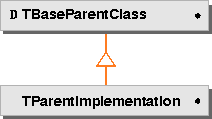
The implementation for a parent dispatcher handles:
While MRemoteDispatcher is not multithread-safe, TDispatcherChildDirectory is designed so that you can use it in a multithread-safe manner. When you use child objects with multiple threads, you must ensure that only one thread uses a particular child at a time.
To enforce this behavior, preface the code that uses a child with a call to TDispatcherChildDirectory::Use. End the code accessing that child with a call to TDispatcherChildDirectory::DoneWith.
Multithread safety
[Contents]
[Previous]
[Next]
![]() Click the icon to mail questions or corrections about this material to Taligent personnel.
Click the icon to mail questions or corrections about this material to Taligent personnel.